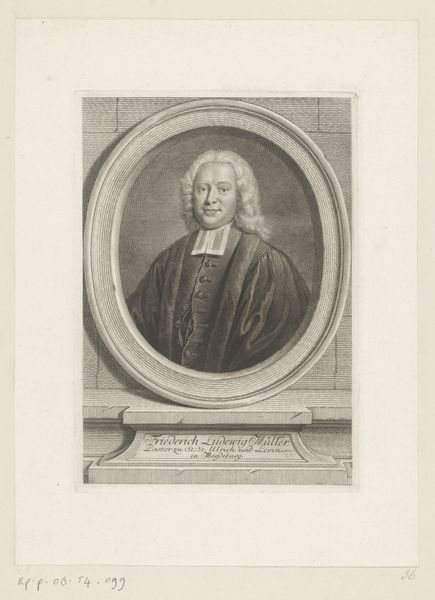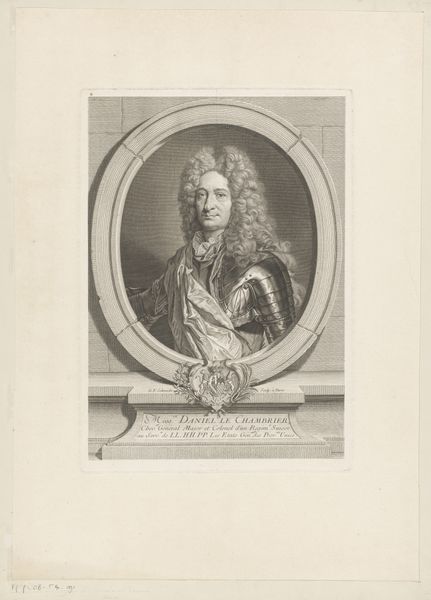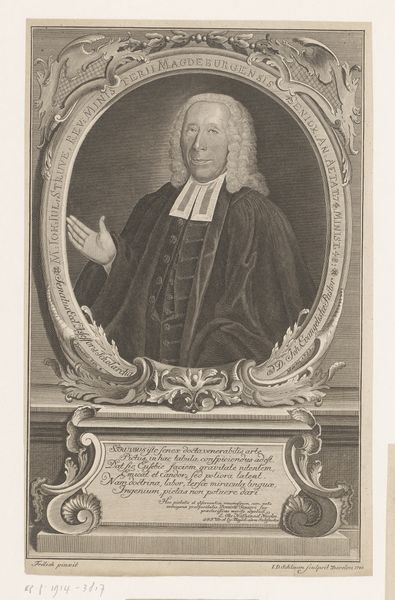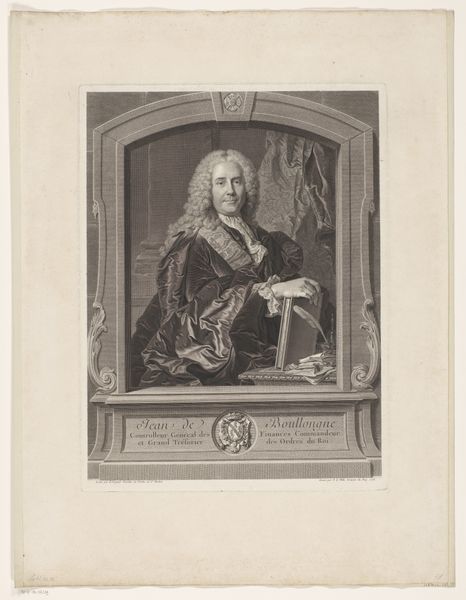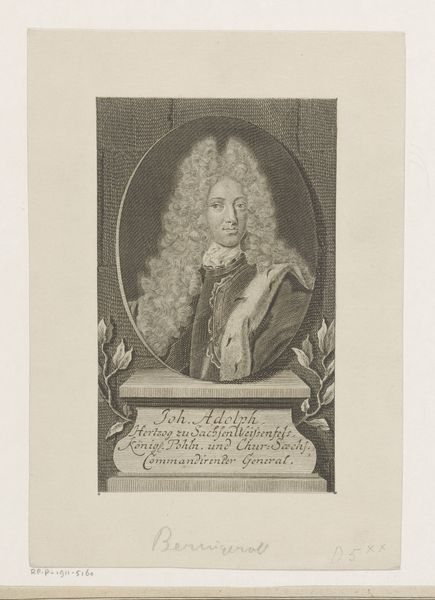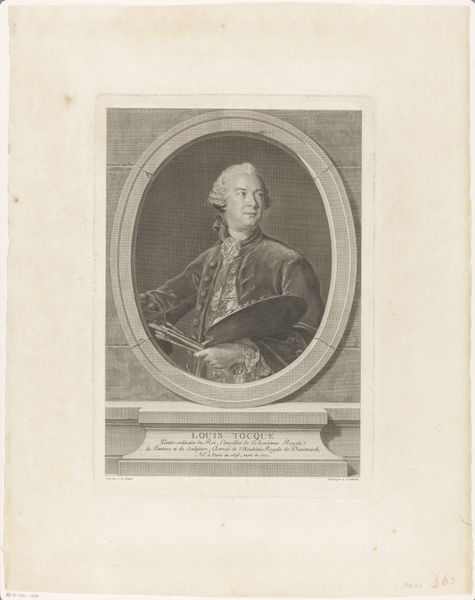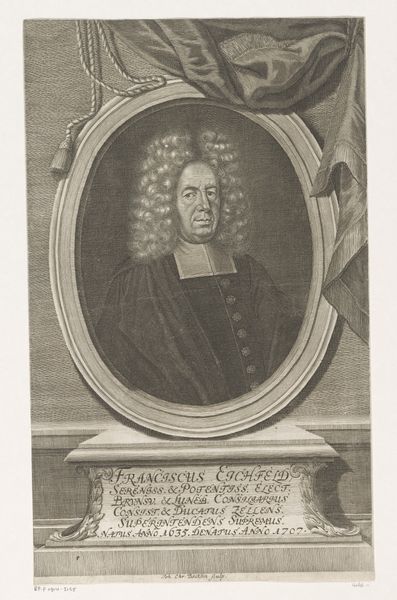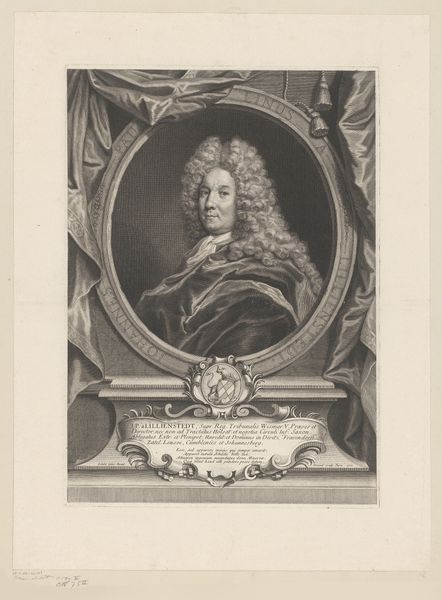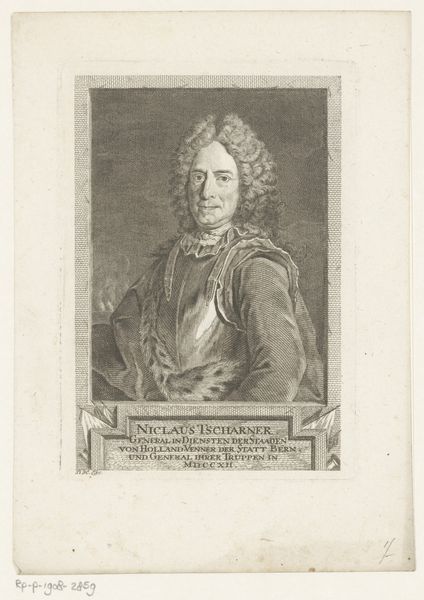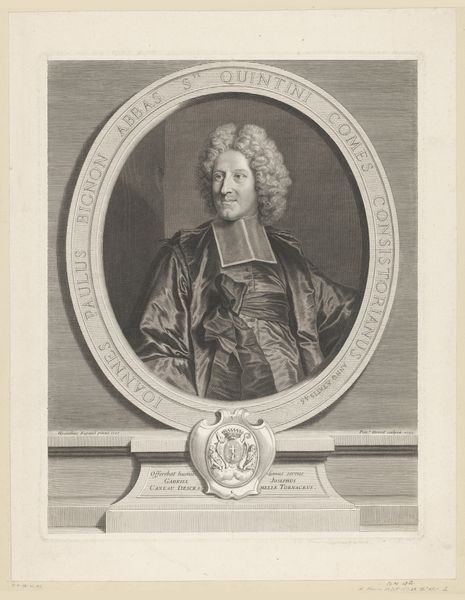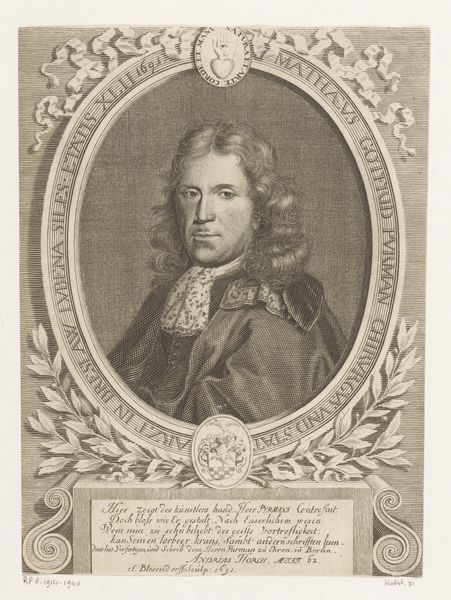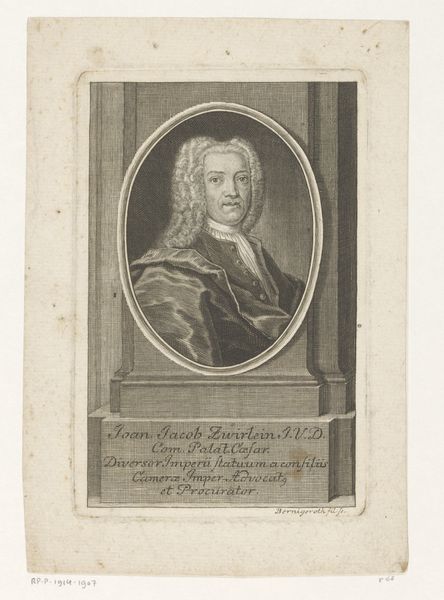
paper, engraving
#
portrait
#
aged paper
#
baroque
#
paper
#
portrait reference
#
framed image
#
15_18th-century
#
academic-art
#
engraving
Dimensions: height 368 mm, width 234 mm
Copyright: Rijks Museum: Open Domain
Curator: This engraving from 1744, currently residing here at the Rijksmuseum, is titled "Portret van Jean-Frédéric Ostervald" and was created by Georg Friedrich Schmidt. It’s rendered on paper, exhibiting the exquisite detail achievable through engraving. What strikes you about it? Editor: Well, immediately, I'm drawn to the calm intelligence in his eyes and that magnificent wig! It feels… reserved, stately, but also very human, you know? A little world-weary, maybe? Curator: It’s fascinating how much personality engravers managed to imbue into these printed portraits. Given that Ostervald was a prominent protestant pastor, it would be interesting to learn about the production of similar religious engravings. Consider how these objects often played a key role in shaping and solidifying religious and social identities. The circulation of this image was a way of materially reinforcing his position. Editor: Exactly, thinking about circulation is key. The engraving transforms him into something reproducible, making his image and therefore his influence, incredibly portable. Imagine these prints traveling through communities. You know, I’m curious about the engraver's process. How did they translate skin texture and the drape of fabric with just lines on a copper plate? Curator: A close look reveals masterful control. Different hatching techniques created variations in tone and texture, conveying form through dense networks of lines. The burin, the tool used for engraving, would allow a range of expression. Editor: It’s like they're sculpting with light. It’s amazing the level of precision the artist achieved on the original metal plate. A mistake could have damaged or ruined the piece. Curator: Yes, absolutely. These images are also about power. Consider how the architecture framing his figure also subtly reinforces notions of status and respect. Editor: I agree! It seems the portrait functions as a sort of visual sermon itself. Seeing him, framed so officially and elegantly, I immediately receive the intended message of authority and respect. Curator: Understanding the material realities helps us understand his historical significance. What begins as admiration shifts into something deeper – understanding these elements of faith and work allow the past to better meet the present. Editor: Well said! It reminds me of how objects truly become containers of our memory and history. It allows us to appreciate not only artistic skills, but a man's reputation carved in time.
Comments
No comments
Be the first to comment and join the conversation on the ultimate creative platform.
